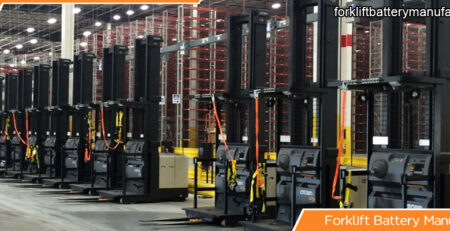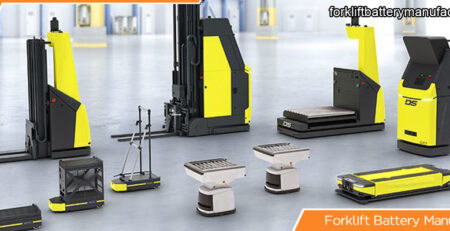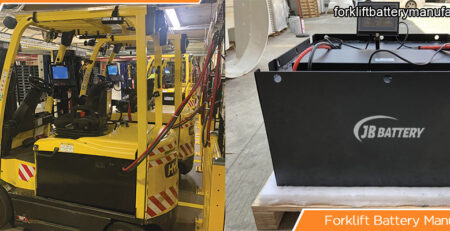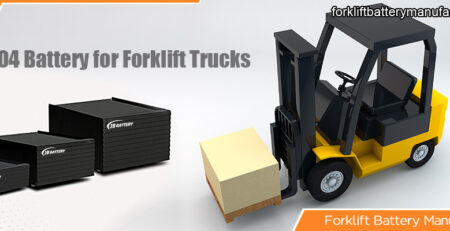Choosing the Right Automated Guided Vehicles AGV Robot With LifePo4 Lithium Ion Forklift Battery Pack For Your Warehouse Material Handling
Choosing the Right Automated Guided Vehicles AGV Robot With LifePo4 Lithium Ion Forklift Battery Pack For Your Warehouse Material Handling
An AGV (Automatic Guided Vehicles) is a self-guided vehicle that follows a predetermined route using various technologies such as a magnetic strip, a track, a laser, or GPS.
They are commonly used to transport goods, raw materials, pallets, and other items. Initially used in industrial settings, they are now increasingly being used by businesses, for example, to transport products from one workstation to another.
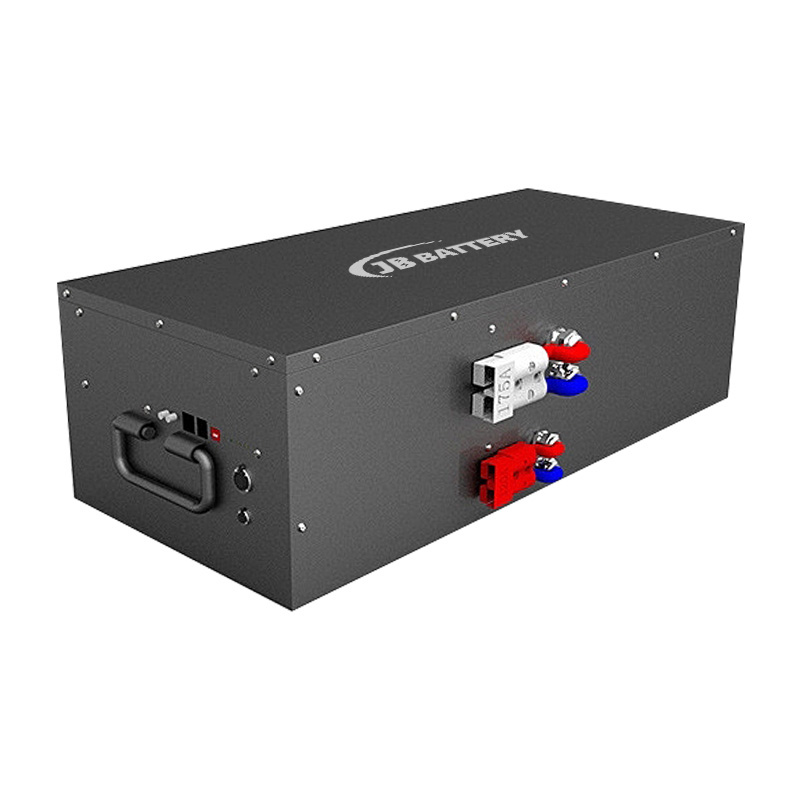
What exactly is an AGV?
AGV is the abbreviation as Automated guided Vehicle. They are autonomous, driverless vehicles that travel a defined route by using different types of guiding technologies, including:
– magnetic strips
– the lines are marked
– tracks
– lasers
– a camera (visual guiding)
– GPS
An AGV’s energy source is provided with a battery, and comes with safety safeguards along with various other mechanisms (such as the removal of load or mounting).
Its primary function is to move materials (products pallets, boxes and so on.). It also has the ability to move and stack loads across a large distance.
AGVs are usually used inside (factories warehouses) but they can be utilized outside as well. Amazon is famous for its an entire fleet consisting of AGVs at its facilities.
The AGV as well as the AGV System
The AGV System is total logistics solution that combines all the necessary technology to allow the AGV to function in a safe and efficient manner. It includes:
Solution elements include loading handling, load transportation feed order, safety and load handling;
Technologies technology: navigation, traffic control communication management of loading devices , and safety systems.
What is the best way to select an AGV?
The selection of an AGV system will depend on the function the vehicle has to complete and the level of complexity of the infrastructure that is already in place or that is to be installed. Before making a final choice, make sure to be asking yourself the following questions:
– What weights will my AGV be required to transport?
– Are they either heavy or light?
– For large loads A custom-designed AGV could be a better option.
Which type of navigation do you want to choose?
The kind that you use for navigation (laser guidance magnetic strip, laser guidance GPS …) is determined by the specific environment that the AGV is operating in (whether it’s raining or cold and if there is interaction by a person etc.)
How accurate is AGV’s degree of precision?
– Be sure that your AGV is operating at the right level of accuracy in order to properly put the load in place without causing harm to it.
– Does your AGV in sync with the existing logistics system in use by my company?
– AGV system AGV system is a part of an automated logistic system.
– Therefore, it is essential to make sure that the system is compatible with this system to the existing interfaces (ERP or enterprise resource planning or WMS Warehouse management system) your business is currently employing.
Do I need to choose between an ordinary or a bespoke AGV?
– A basic AGV is more affordable to purchase
– Maintaining an existing AGV is also more straightforward to do by an outside service provider
– But, for very the most extreme or special load such as an AGV that is custom-designed for your needs.
Do I have to equip the AGV I am using with security features?
– You can outfit your AGV with sensors that slow down its movements when it encounters an obstruction or another person.
– Audio and visual elements can be added.
Why would you want to invest in AGV? AGV system?
Production center equipped with AGV system
Utilizing AGVs in warehouses has increased in the last few years. This is due to their ability to AGVs enable you to increase the efficiency of handling of equipment and thus improve productivity. Benefits of AGVs include: AGV method include
The optimal operation is available 24/7.
– Since they don’t have drivers AGVs can be operated all day , and at night too.
– It’s just important to have the amount of time needed for the battery to be recharged between activities.
Security guaranteed for the people, processes, and loads:
– Because it is the case that an AGV follows a pre-programmed route and the process is monitored from the start to the conclusion that process. This allows for improve the control of shipments as well as the ability to trace the movement of goods in real-time.
– AGV AGV is fitted with safety features that stop it from running into drivers along its route.
– An AGV can achieve an accuracy of about 10 millimeters, which permits precise placement of the load. It also ensures that there is no damage to products that are transported through hand-handling.
– With safety and detection sensors, AGVs are designed to stop before an obstruction and avoid collisions.
Improvement of the working conditions, and the reduction of MSDs (Musculoskeletal Disorders):
– AGVs ease human operators of the repetitive and difficult task of lifting large loads.
– Operators may then be assigned tasks where their contributions add value.
Costs of production reduced:
– AGVs allow for the safe, efficient and cost-effective transportation of goods and reduce the cost of labor.
– This will allow you to rapidly boost your return on investment.
– AGVs are also able to operate in places that are difficult for humans to get access to because of extreme temperatures or dangerous materials such as.
– AGV AGV can be described as an automatic system that is simple to implement:
If you just want to automatize a small portion of your production, you could implement one AGV but not an complete automation system.
There are some disadvantages of AGVs which should be taken into consideration:
– They can’t function properly outdoors. For instance, damp or uneven ground could disrupt the AGV’s movements.
– AGVs aren’t suitable for tasks that are not repetitive.
– They’re less flexible than operators who is able to shift tasks when production demands it and an AGV is restricted to its specific task.
What kind of navigation do you want to choose?
As we’ve learned that an AGV is able to move with different kinds of nagivation techniques.
Laser guiding:
The AGV has the ability to rotate lasers that allow it to identify reflectors into its surroundings and determine its location with precision.
They are highly precise and permit the handling of products to within a quarter of centimeter.
They are specifically suited for medical applications.
Wire guidance:
The AGV is a vehicle that travels on tracks that could comprise tracks, wires magnetic lines, cables or tracks.
It is necessary to set up rails for this technique, however.
It is best to opt for this option if the applications do not require flexibility.
Visual aids:
AGV AGV follows a line drawn on the ground which its camera detects.
The installation costs are lower than wire guidance. This kind of AGV does not require any additional installation work.
Geoguiding:
– The AGV includes a mapped representation of the environment within its system, which allows it to move in a self-contained manner without needing to change infrastructure.
– It calculates its journeys by itself, automatically.
– This technology is highly adaptable because it allows you to alter the AGV’s mapping anytime you wish through direct interaction with your mapping program.
– It’s the most reliable option.
What kinds of AGV do we have?
MSK electronic fork AGV
There are three main kinds of AGVs that are: unit load forklift, tugger and unit load.
Vehicles that load units:
They are motorized vehicles that are capable of moving only one product (i.e. coils, motors) or the pallet or bin that holds goods.
AGV Forklifts:
– They serve to transport pallets.
– Many models come with sensors mounted on their forks (for example , infrared sensors).
(or tugger) automatic guided vehicles: (or tugger) automated vehicles that are guided by computers:
– Motorized cars are that are capable of pulling one or more non-motorized vehicle with loads on them as trains.
– They can handle that can reach 8 tonnes.
– They also have tray racks that can be moved, lower, and lowered using belts, motorized rollers and so on. to guarantee the automated transfer of the loads.
What are the most important applications of AGVs?
AGVs can be used to transport a variety of material, such as carts, pallets, rollers and containers.
They are especially suited to:
Production centers, for:
– handling raw materials (paper rubber, steel, and even plastic).
– This includes transporting materials to the warehouse , and transporting them directly to the production lines.
– Transportation of products during production.
– AGVs can be used to transport products from your warehouse to treatment or production lines, or from one area of processing to another.
– Supplying tools and parts.
– The transportation of the finished goods, which requires careful handling because the items are then delivered to the customers.
– Because AGVs are controlled precisely for navigation, the chance of injury is reduced to an absolute very low level.
– Recycling waste by transporting it to recycling facilities.
Logistics centers (storage/distribution) for:
– Retrieving and storing products.
– Pallet handling is a regular and repeated motion.
– AGVs can transport pallets out of the palletizer that packs them and transport them in the warehouse to the shipping docks.
– Automatically loading the trailer.
– The idea is new method of using AGVs however it is becoming more well-known.
– AGVs can pick up pallets from racks or conveyors and transport them to trailers.
– handling the flow of product in the warehouse.
What are the most recent AGV trending?
In the last few years, the capacities in AGV systems have increased dramatically since technology and sensor software have been improved. Manufacturers are now providing cars that have the ability to be more precise, efficient , and safer.
Different kinds of technology may be a major influence in the AGV industry over the next few years.
LIDAR
A LiDAR sensor emits laser pulses that determine the distance between the object and the AGV that is equipped with it. This data is compiled to allow an 360deg map of the area in operation to be drawn, which allows the AGV to travel without additional infrastructure.
Camera vision systems
– The camera permits data to be recorded in real time. This aids users of the AGV “see” obstructions and the infrastructure of the construction.
– When this data is paired with the data supplied by LiDAR sensors a 3D dynamic image of an operational space is created.
New software
Software is the foundation that makes up the AGV system. It is able to solve the unique issues of each installation and therefore develop specific solutions that best satisfy specific needs

For more about choosing the right automated guided vehicles agv robot with lifepo4 lithium ion forklift battery pack for your warehouse material handling,you can pay a visit to Forklift Battery Manufacturer at https://www.forkliftbatterymanufacturer.com/automated-guided-vehicles-agv-battery/ for more info.


